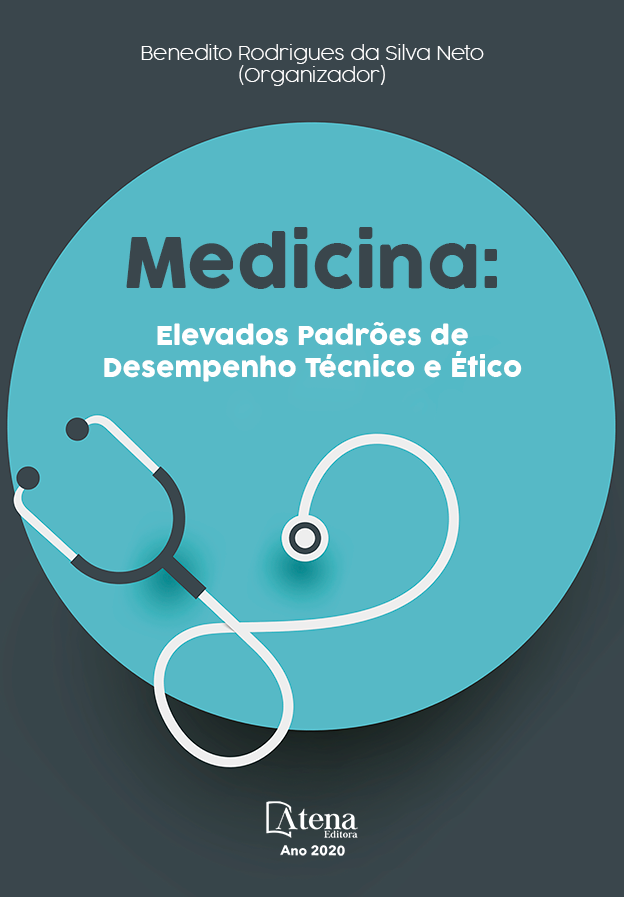
TRATAMENTO CIRÚRGICO DE CARCINOMA BASOCELULAR DO TIPO ESCLERODERMIFORME E RECIDIVA LINFONODAL: RELATO DE CASO.
Introdução. O carcinoma esclerodermiforme é um dos subtipos histológicos do carcinoma basocelular de maior caráter infiltrativo e recidivante, sendo responsável por cerca de 20% dos carcinomas primários e 88% dos tumores recidivantes. O tumor recidivado apresenta pior prognóstico. Geralmente manifesta-se em área de cicatriz, ao seu lado ou em profundidade, principalmente em região do “H” da face. Este tumor pode apresentar-se sob outros tipos histológicos, a exemplo do basoescamoso. Relato de caso: Paciente masculino aos 17 anos diagnosticado com carcinoma basocelular do subtipo esclerodermiforme passou por parotidectomia estendida ao pavilhão auricular e pele, com esvaziamento cervical. À reconstrução levou à paralisia por sacrifício do tronco superior do nervo facial - ramo orbicular do olho e frontal. Realizou cirurgia plástica e fez radioterapia adjuvante. Aos 21 anos apresentou linfonodomegalia cervical com necessidade de esvaziamento e biópsia, resultando em carcinoma basoescamoso. Evoluiu com disseminação da doença a distância em tórax e bacia, sendo submetido a novos ciclos de radioterapia e quimioterapia combinados. Vindo a falecer por complicações pulmonares. Conclusão: Em razão do caráter infiltrativo, alta recidiva e aparência inoculada ao exame físico, o tratamento do CBC agressivo é a cirurgia radical com margens cirúrgicas livres, pois rastreia suas extensões subclínicas, sendo, dessa forma, uma das mais seguras para a cura do paciente e prevenção de recidivas. Quando primário, o CBC necessita, além da cirurgia, por muitas vezes da radioterapia. O tumor recidivado tem tratamento desafiador e normalmente cursa com a necessidade de novas reabordagens cirúrgicas e utilização de outras modalidades terapêuticas, como a quimioterapia com medicações modernas que permitem o aumento de sobrevida.
TRATAMENTO CIRÚRGICO DE CARCINOMA BASOCELULAR DO TIPO ESCLERODERMIFORME E RECIDIVA LINFONODAL: RELATO DE CASO.
-
DOI: 10.22533/at.ed.70920181120
-
Palavras-chave: Carcinoma basocelular. Cirurgia. Recidiva. Prognóstico.
-
Keywords: Basal cell carcinoma. Surgery. Relapse. Prognosis.
-
Abstract:
Introduction. Sclerophermiform carcinoma is one of the histological subtypes of the most infiltrative and recurrent basal cell carcinoma, accounting for about 20% of primary carcinomas and 88% of recurrent tumors. The recurrent tumor has a worse prognosis. It usually presents in a scar area, beside it or in depth, mainly in the “H” region of the face. This tumor may present itself under other histological types, such as basal squamous. Case report: A 17-year-old male patient diagnosed with basal cell carcinoma of the sclerodermiform subtype underwent parotidectomy extended to the ear and skin, with neck dissection. Upon reconstruction, he was paralyzed by sacrifice of the upper trunk of the facial nerve - orbicular branch of the eye and frontal. He underwent plastic surgery and had adjuvant radiotherapy. At the age of 21, he developed cervical lymph node enlargement at the same site as the previous surgery, requiring a neck dissection again. Lymph nodes presented as basal squamous carcinoma. The patient progresses with the spread of the disease at a distance in the chest and pelvis, being submitted to new cycles of combined radiotherapy and chemotherapy. He evolves to death due to pulmonary complications of the disease. Conclusion: Due to the infiltrative character, high recurrence and appearance inoculated on physical examination, the treatment of aggressive BCC is radical surgery with free surgical margins, as it tracks its subclinical extensions, being, therefore, one of the safest when healing the patient , both in preventing recurrences and in curing them. When primary, CBC often requires, in addition to surgery, radiotherapy. The recurrent tumor has challenging treatment and usually comes with the need for new surgical approaches (if possible) and the use of other therapeutic modalities, such as chemotherapy with newer drugs that allow for increased survival.
-
Número de páginas: 10
- Marcella de Albuquerque Wanderley
- Ana Miele Pereira Melo
- Débora Araújo Aguiar
- Carla Mariana Xavier Ferreira
- Julia Teresa de Albuquerque Celestino
- José Lucio Martins Machado
- ANA CAROLINA PASTL PONTES


